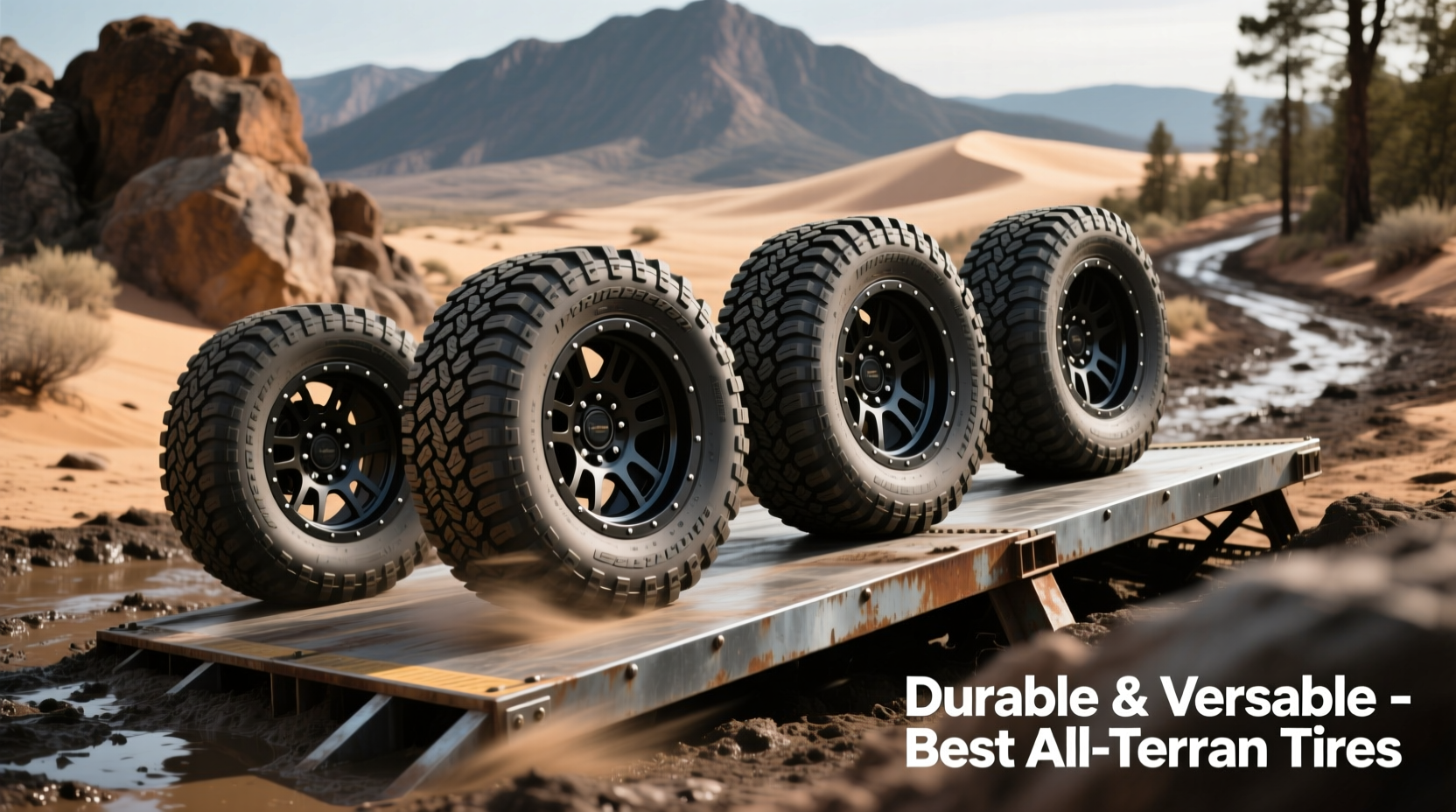When it comes to off-road capability without sacrificing on-road comfort, few components matter more than your tyres. All terrain tyres bridge the gap between rugged trail performance and daily drivability, offering a balance that appeals to adventurers, overlanders, truck owners, and SUV drivers alike. But not all all terrain tyres are created equal. True durability and versatility require thoughtful engineering, proven tread compounds, and real-world testing across diverse surfaces—from rocky trails to desert dunes and rain-slicked highways.
Selecting the right tyre means understanding how tread design, sidewall strength, noise levels, and load capacity interact in different environments. The best all terrain tyres don’t just survive rough conditions—they thrive in them while maintaining safety, fuel efficiency, and ride quality on paved roads.
What Makes an All Terrain Tyre Truly Durable and Versatile?

Durability in all terrain tyres isn’t just about thick rubber or aggressive tread. It’s a combination of materials, construction techniques, and design philosophy. A truly durable tyre resists cuts, punctures, and chunking—especially when crawling over sharp rocks or navigating through dense forest trails. Equally important is versatility: the ability to transition seamlessly from highway cruising to muddy backroads without requiring constant adjustments or compromising safety.
Key features that define high-performance all terrain tyres include:
- Ribbed shoulder blocks for enhanced grip on loose surfaces and resistance to sidewall damage.
- Sipe technology that improves wet and cold weather traction by creating micro-grooves for water dispersion.
- Two- or three-ply sidewalls with reinforced layers (often using polyester or nylon) to resist impacts and abrasions.
- Stone ejectors in tread grooves to prevent stone retention, which can lead to belt damage over time.
- Variable pitch tread patterns designed to reduce road noise during long-distance travel.
Top 5 All Terrain Tyres Known for Durability and Performance
Based on independent tests, user feedback, and expert evaluations, these five models consistently rank among the most reliable and adaptable all terrain tyres available today.
| Tyre Model | Key Strengths | Lifespan (Estimated Miles) | Noise Level | Best For |
|---|---|---|---|---|
| BFGoodrich All-Terrain T/A KO2 | Excellent rock traction, cut-resistant compound | 50,000–60,000 | Moderate | Rock crawling, overlanding |
| Goodyear Wrangler Duratrac | Aggressive biting edges, built-in rim protectors | 55,000–65,000 | Moderate-High | Mud, snow, steep inclines |
| Toyo Open Country A/T III | Silent wall technology, even wear | 60,000–70,000 | Low-Moderate | Highway-heavy users who still go off-road |
| Falken Wildpeak A/T3W | 3D siping, strong sidewall, excellent wet grip | 50,000–60,000 | Low | All-season versatility, coastal climates |
| Kumho Road Venture AT51 | Balanced performance, budget-friendly | 50,000–55,000 | Moderate | Daily drivers needing occasional off-road use |
The BFGoodrich KO2 remains a benchmark in the category, having been tested by military and emergency response units in extreme environments. Its CoreGard technology reinforces the sidewall with thicker rubber and layered fabric, making it highly resistant to snags and tears.
“An all terrain tyre should inspire confidence whether you’re crossing a riverbed or merging onto the interstate. The best ones do both without compromise.” — Marcus Reed, Off-Road Vehicle Engineer and Overland Instructor
How to Choose Based on Your Driving Needs
Your ideal tyre depends heavily on where and how you drive. Someone living in the Pacific Northwest dealing with slick forest trails and frequent rain will have different priorities than a Southwest-based adventurer tackling dry lake beds and rocky mesas.
Step-by-Step Guide to Selecting the Right Tyre
- Evaluate your primary terrain: If more than 30% of your driving is off-pavement, prioritize deeper tread depth and stronger sidewalls.
- Check vehicle compatibility: Confirm load index and speed rating match your manufacturer’s recommendations.
- Consider climate: In colder regions, look for the Three-Peak Mountain Snowflake (3PMSF) symbol for certified winter performance.
- Read user reviews focused on longevity: Look for comments about tread wear after 30,000+ miles, especially regarding uneven wear or shoulder cracking.
- Test noise levels: If you commute long distances, choose a model engineered for reduced harmonic resonance, such as those with staggered shoulder blocks.
Real-World Example: Overlanding Across the Rockies
Take the case of Sarah Lin, a freelance photographer who completed a six-week journey from Colorado to British Columbia in her modified Toyota 4Runner. Her route included unpaved mining roads, alpine passes under snowmelt, and stretches of gravel switchbacks at elevations above 10,000 feet.
She chose the Falken Wildpeak A/T3W based on their balanced reputation for wet traction and sidewall resilience. During the trip, she encountered a section of sharp volcanic rock that shredded a fellow traveler’s standard highway terrain tyre. Hers showed only minor scuffing despite repeated contact. “I didn’t realize how much I relied on the tyres until I saw what happened to someone else’s,” she said. “They handled everything from slush to sand with zero vibrations on long hauls.”
This example underscores the importance of choosing a tyre that performs reliably across multiple unpredictable conditions—not just one specialty environment.
Essential Buying Checklist
Before purchasing new all terrain tyres, ensure you’ve covered these key points:
- ✅ Confirmed correct size and fitment for your vehicle (including clearance for lift kits)
- ✅ Verified load range matches your GVWR (Gross Vehicle Weight Rating)
- ✅ Checked for 3PMSF rating if driving in snowy or icy areas
- ✅ Compared warranty terms (tread life guarantees vary widely)
- ✅ Researched availability of replacement tyres in remote regions
- ✅ Considered total cost including mounting, balancing, and potential TPMS adjustments
Frequently Asked Questions
Do all terrain tyres last longer than mud-terrain tyres?
Generally, yes. All terrain tyres use harder rubber compounds optimized for mixed use, leading to longer tread life—typically 50,000 to 70,000 miles compared to 30,000 to 40,000 for aggressive mud terrains. However, this depends on driving habits and terrain exposure.
Can I use all terrain tyres year-round?
Absolutely—if they carry the Three-Peak Mountain Snowflake symbol. Many modern all terrain tyres are certified for severe winter service and perform well in snow and slush. However, dedicated winter tyres still outperform them in deep snow and sub-zero temperatures.
Are all terrain tyres bad for fuel economy?
They can reduce fuel efficiency by 1–3 mpg compared to standard highway tyres due to increased rolling resistance and weight. However, newer designs like the Toyo A/T III have minimized this gap through advanced tread shaping and lightweight casing.
Final Thoughts: Invest in Capability, Not Just Looks
Choosing the best all terrain tyres isn’t about chasing the most aggressive tread pattern or the loudest brand name. It’s about selecting a product engineered for resilience, tested across real conditions, and aligned with your actual driving needs. Whether you're weekend camping or embarking on cross-country expeditions, the right tyres provide peace of mind, predictable handling, and the freedom to explore beyond the pavement.









 浙公网安备
33010002000092号
浙公网安备
33010002000092号 浙B2-20120091-4
浙B2-20120091-4
Comments
No comments yet. Why don't you start the discussion?